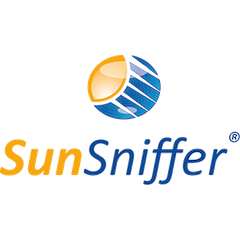Knowing the exact degradation rate of a panel or where exactly a connector is broken is simply out of reach for existing monitoring solutions. SunSniffer® adopted a technology from NASA and refined it together with the German Aerospace Center (DLR). It could be not less than a game changer.
How do you detect faulty connectors in a PV plant? You visit the plant and check each panel? Not with the new technology of SunSniffer®: its new “Digital Twin” offers this information at the push of a button, together with all other errors and power reducing issues, panel-precise – and from 1 cent per Wp. Studies revealed that 8% of all panels are broken, and 34% already have some sort of failure*. Finding those panels and clarifying the warranty issues – especially if it is linear warranty – represent time and cost intense challenges. Similar problems were faced by US space agency NASA back in the early days of space exploration: how to operate, maintain or repair a faraway device or component? They found the answer: pairing it! At the beginning the twins of course were analog, but today the Digital Twin is a fixed component in NASA developments.
Considering PV, SunSniffer® managed to transfer this technology and took digitalization to the next level: with this Digital Twin technology it is possible to gain tremendous more information from existing data than before. For this super complex mathematics high- speed computers are needed, and scientific institutes helped with the development – but now this powerful technology is available, for the first time in PV!
The results of the Digital Twin with data from precise measurements of the low-cost sensors serve diverse stakeholder interests: A Digital Twin provides the exact quality of each panel at each given moment – independent from irradiation. The Digital Twin virtually revolutionizes O&M and transfers it from a human resource intense to an almost only computer-based business.
Who is benefitting from the SunSniffer® technology?
Asset owners are getting an exact report on the panels they were using in their plants. Technical data is transferred into commercial figures. Classification of panels into quality and degradation groups facilitates exchange service considerations and tells you when these services are worthwhile. Warranty issues can be solved quickly and clearly – for both sides, plant owner and manufacturer. O&M companies can offer faster and cheaper service, as the searching-for-the-error part is no longer necessary. In addition, panel and connector failure prediction enables bundled services, which reduce costs too. Panel manufacturers are enabled to validate the materials they use as specified in the Bill-of-Material (BOM) lists – panels of one series are never one kind, they can consist of always changing materials which are published in the BOM list. So now good materials can easily be separated from bad materials and quality of the panels can be ensured.
For which kinds of plants is SunSniffer® useful? SunSniffer® is a huge help for plants of all sizes. Small plants usually have no monitoring at all but need protection, and in case of an error costs are simply disproportionate. Commercial and utility plants usually are monitored, but at inverter or string level only, and due to their size error finding is complex and difficult without panel precise analytics. Yield increases of around 7% have been reported from the fields, depending on the region.
How can SunSniffer® be obtained?
Panel manufacturer just have to use a junction box with the integrated sensor to enable their panels to the new technology. Diverse junction boxes are already being offered with SunSniffer® technology. But it can be retrofitted easily to existing plants as well: either completely or just partially, like every other string, or just one panel in a string as reference – as desired.
So what is SunSniffer®? It certainly is a disruptive technology compared to existing monitoring solutions, according to Dr. Kilper from DLR.


























